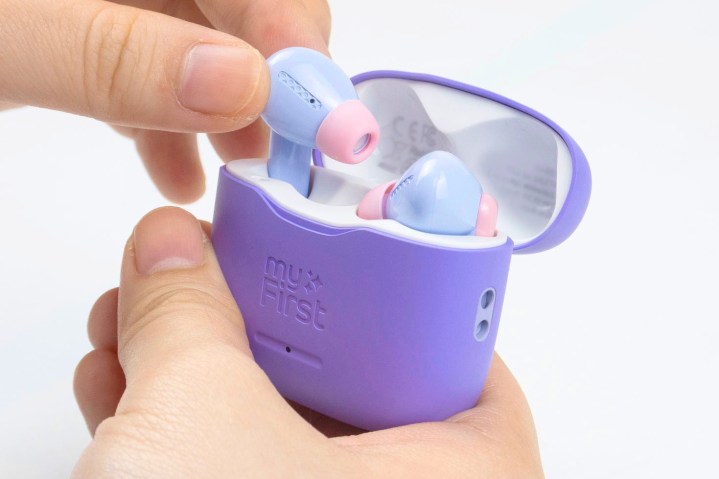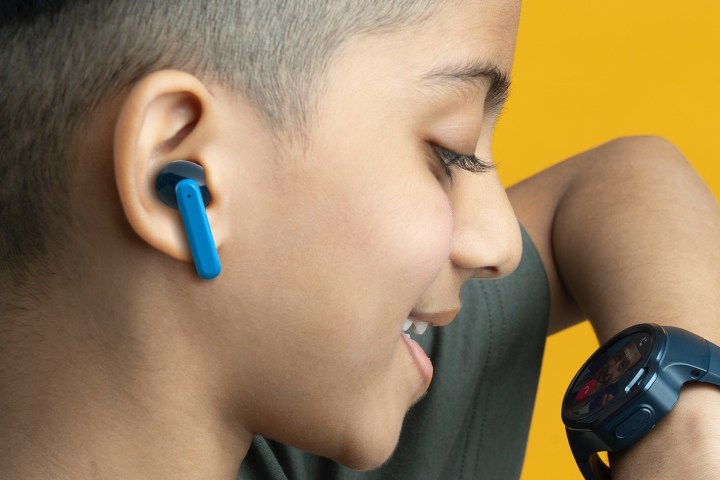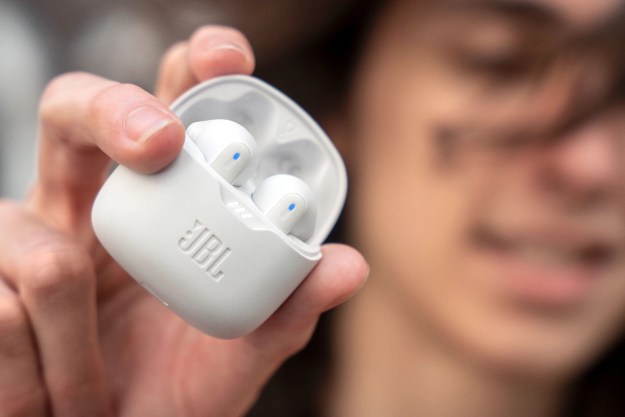
Typically, when it comes to kids’ headphones and earbuds, most companies focus on preventing children from being exposed to loud volume levels. This is critical. The earlier you can get a handle on your kids’ listening habits, the more likely you are to keep them from suffering Noise Induced Hearing Loss (NIHL) — a slow process that has serious outcomes.
However, there’s another factor when it comes to kids using headphones and earbuds safely, and it’s the flip side of the coin: making sure kids hear the sounds in their environment that signal dangers, like cars or emergency vehicle sirens.

Though it may not be an everyday occurrence, it didn’t take me long to find this recent story of an Atlanta woman who managed to go jogging right through an active shooting scene because her earbuds so effectively blocked the sounds around her.
This is the challenge that MyFirst is trying to solve with its CareBuds — a set of $50 wireless earbuds for kids that can automatically engage a transparency mode when they sense movement. MyFirst says that it invented the technology, making the CareBuds the first earbuds to offer it. If it works, it could help kids hear a potential hazard before it’s too late.
The CareBuds, which come in Space Blue, Blue, Cotton Candy, and White, also do volume-limiting, keeping sound to a maximum of 85 decibels, the loudest level that is considered safe for long exposures. Other kid-friendly features include six sizes of eartips to help a variety of ear sizes get a good fit, and an “anti-loss strip” — basically a cord that connects the two earbuds.

I’m a little skeptical of that concept since you have to remove the cord before replacing the earbuds back in the case, and attach it again the next time you pull them out. Plus, there’s no place to store the cord, leading me to think the first thing your kids will lose is the anti-loss strip.
Like the charging case for the second-gen Apple AirPods Pro, you can attach a wrist strap. Unlike Apple’s earbuds, MyFirst actually includes a strap (Apple, seriously. These are $50 earbuds).
MyFirst claims the earbuds will last about six hours per charge, with an additional 25 hours of power in the case, which charges via USB-C. The earbuds offer IPX4 water protection (not for swimming, but fine for sprays of water or sweat) and the case has a moderate IPX2 rating (water won’t kill it, but try to keep it dry).
If these sound like a good solution for a kid in your life, you can buy them from Amazon, or directly from MyFirst.
Editors' Recommendations
- Raycon launches $149 Everyday Pro wireless earbuds and headphones
- Beyerdynamic adds noise canceling to its Blue Byrd neckband earbuds
- Denon snaps up Nura, says new personalized-sound earbuds arriving this year
- Jabra’s $100 Elite 4 are its most affordable ANC earbuds yet
- These Fruity Pebbles earbuds are a cereal junkie’s dream come true




